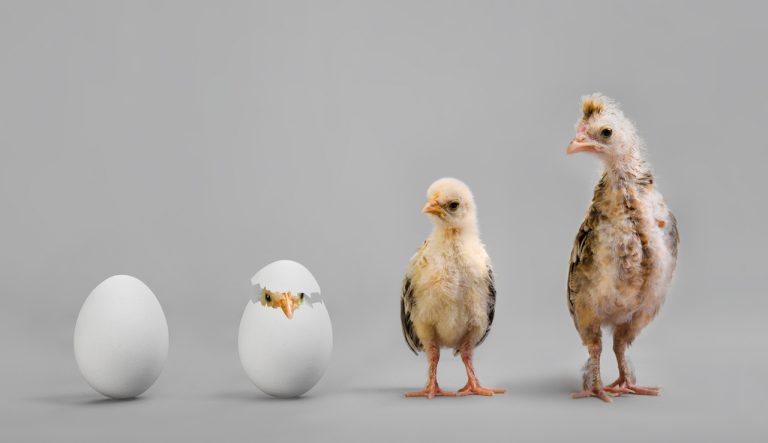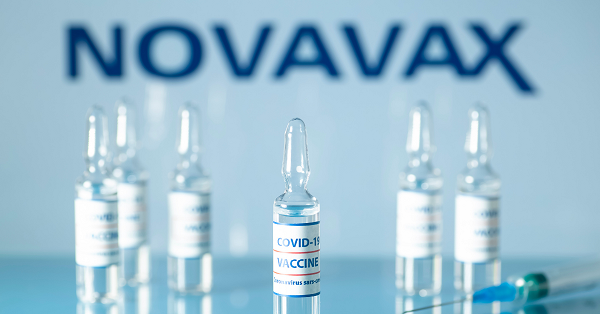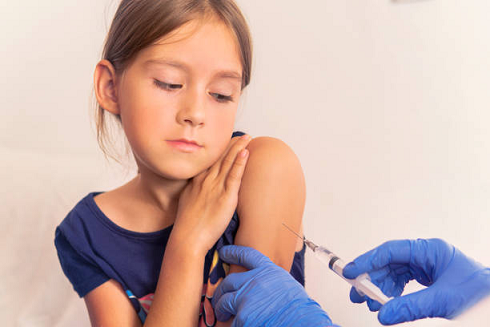Opinion | If you do a Google search on the topic of how vaccines are made, the first hit you may get is a page from Children’s Hospital of Philadelphia (CHOP) titled “Making Vaccines: How Are Vaccines Made?” On it is a video by pediatrician Paul Offit, MD that, at first, gives the sense that he is going to go into some detail about the manufacturing process. Dr. Offit starts out… “One thing that some parents wonder about is how does one make vaccines?” But it quickly becomes clear that Dr. Offit’s intent is merely to provide an ultra brief and sanitized introduction to the procedure.1 2
“First, one way to make a vaccine is that you take a virus and you weaken it. Weaken it so that it can reproduce itself enough to induce an immune response, but not enough to cause disease. And that’s the way that the measles vaccine is made,” Dr. Offit explains. He says that that’s also the way the mumps, chickenpox, rubella and rotavirus vaccines are made.1 2
That’s it, one step? You take a virus and weaken it and, voilà, you have a vaccine?
Dr. Offit goes on to explain the way the tetanus and diphtheria vaccines are made. He says, “Another way that you can make a vaccine is you can take a bacteria that normally makes a toxin, like tetanus, or diphtheria. And so those bacterial infections are more intoxications, frankly, than they are infections. So you take the toxin made by those bacteria, and you kill it with a chemical. And then that becomes your vaccine.”1 2
That’s all? You take the bacterial toxin and you kill it and then, suddenly, a vaccine appears?
Dr. Offit continues…
Another way you can make a vaccine is you can take a bacteria, like the bacteria that causes a meningococcal infection, pneumococcal infections, another infections caused by Haemophilus influenzae type b. And you take this complex sugar coating of that bacteria, called polysaccharide, link it to a harmless protein and then that becomes your vaccine.
So another way, yet and finally … the final way that one can make a vaccine is you can take a virus and instead of weakening it, you can kill it. And that’s the way that the polio vaccine is made. That’s the way the rabies vaccine is made. That’s the way the hepatitis A vaccine is made.
And one more, there’s one more way that you can make a vaccine, which is that you can take just a part of the virus. So you just take one protein from the virus that you know induces an antibody response that can completely neutralize the virus. And that then becomes your vaccine. And those single protein vaccines are the hepatitis B vaccine and the human papillomavirus vaccine.1 2
Dr. Offit’s explanations leave you thinking, “There must be more to it than that.”
In fact, there is.
Another of the initial hits you may get from your Google search is “How Vaccines Are Made” on website of The History of Vaccines. It offers a much more informed and comprehensive, five-step explanation of what goes into making a vaccine.3
The first step is the “generation of the antigen used to induce an immune response.” This step includes the “growth and harvesting of the pathogen itself (for later inactivation or isolation of a subunit) or generation of a recombinant protein (a protein made with DNA technology) derived from that pathogen. The page explains that recombinant proteins can be “manufactured in cultures of bacterial cells or yeast.” It explains that viruses are grown in “cell cultures” (sometimes derived from chicken embryos) and bacteria are grown in “devices using a growth medium developed to optimize the yield of the antigen while maintaining its integrity.”3
The second step is to “release the antigen from the cells and isolate from the material used in its growth.” The page notes that “proteins and other parts of the growth medium may still be present and must be removed in the next step” and that the “goal of this stage is to release as much virus and bacteria as possible.”3
The third step is the “purification of the antigen.” The page explains that for vaccines that are made from “recombinant proteins,” this may involve a method of separating materials called “chromatography” and ultrafiltration. It notes that “inactivation may occur.”3
The fourth step may involve the addition of an adjuvant, which is the “material that nonspecifically enhances immune responses.” Additionally, vaccines may also include “stabilizers to prolong shelf-life or preservatives to allow multi-dose vials to be used safely.”3
Finally, the fifth and last step “combines all components that make up the final vaccine and uniformly mixes them in a single vessel.” Then, the vaccine is poured into a “vial or syringe packages, sealed with sterile stoppers or plungers, and labeled for widespread distribution.”3
There are a lot more ingredients in vaccines other than lab-altered viruses and bacteria, including potentially toxic ingredients. All you have to do is take a look at the list of excipients included in U.S. vaccines published by the U.S. Centers for Disease Control and Prevention (CDC).4
So why would a vaccine developer promoting mandatory use of vaccines like Dr. Offit offer such a simplistic explanation about the process of how vaccines are made? Could it be that he doesn’t want to tell people the whole truth because he is afraid they will start asking questions?
It reminds me of parents who answer their children’s question about where babies come from by telling them about the stork. It may work in the short term but fairy tales don’t hold up over time.
Note: This commentary provides referenced information and perspective on a topic related to vaccine science, policy, law or ethics being discussed in public forums and by U.S. lawmakers. The websites of the U.S. Department of Health and Human Services (DHHS) provide information and perspective of federal agencies responsible for vaccine research, development, regulation and policymaking.
References:1 Making Vaccines: How Are Vaccines Made? Children’s Hospital of Philadelphia June 28, 2016.
2 Offit PA. What Are the Different Types of Vaccines? Children’s Hospital of Philadelphia Aug. 11, 2015.
3 How Vaccines Are Made. HistoryOfVaccines.org.
4 Centers for Disease Control and Prevention. Excipients Included in U.S. Vaccines, by Vaccine. CDC.gov January 2019.













12 Responses
– Janine Roberts, Investigative Journalist, writes…
“The fluid in the vaccines is never sterile. It is filtered straight from the bird cell culture incubators in which the measles virus is produced – and nothing the size of a virus or smaller than a virus can be filtered out before it is put into our children. I have obtained previously unpublished NIH transcripts of the meetings of the top UK and US vaccine scientists in which they admit this.
I quote them extensively in my new book -Fear of the Invisible. They state that the
…vaccines are both “crude” and “primitive’”..
to quote our Dr Phil Minor of the UK Health Department, They are full of bits of dead cells – including DNA and RNA fragments that the doctors at this conference described as
‘possible causes of cancer and autoimmune diseases’
as well as bird proteins, toxins, bird viruses. A scientist from WHO also admits extraordinarily in these transcripts that the measles vaccine is extensively contaminated with ‘Bird Leukosis Virus’ and that they cannot remove it.
None of this has been reported to parents. This is from a highly authoritative source – an NIH transcript of named leading scientists from the top scientific institutions and pharmaceutical companies in meetings that were not attended by parent organizations or by journalists.”
This is an extract from Janine’s new book – ‘Fear of the Invisible’.
‘Since many parents have reported serious illnesses in their children after MMR, we have to ask: When measles virus is injected into our children, what else might be in the needle? How sterile is the procedure?
In a paper entitled ‘Isolation and Identification of Measles Virus in Cell Culture,’ the US Government’s leading virus research institution, the CDC, currently lays out how isolation of this virus should be done. It instructs; first obtain from a patient suspected of having measles a small sample of urine or fluid from the nose or mouth.
Next, states the CDC, prepare a culture of cells from marmoset monkeys by making these cancerous and giving them Epstein-Barr disease!
Cells from this species of monkeys, it informs us, are ’10,000 times’ more sensitive to the measles virus than are normal human cells (i.e. they are much more likely to fall gravely ill in this experiment). The monkey cells are then settled into a monolayer (one cell deep layer) in a laboratory vessel. (The measles and MMR vaccine manufacturers are currently using instead cells from mashed chicken embryos rather than from very expensive marmoset monkeys.)
Next, using rubber gloves and splash goggles, add to the cells a dangerous toxin called trypsin.
The CDC tells us to expect some of the cells to fall off the sides of the vessel as if they have been poisoned. They have been. It then instructs: add nutrients and glucose and leave the cells alone for two or three days so they can recover.
Next add to the cell culture the sample gathered from the patient and place the culture in a warm incubation chamber. After an hour, inspect these cells with a microscope to see if are rounded, distorted, or floating free as they were after trypsin was added. If they are, the CDC calls this proof that measles virus is present and causing this illness! If 50% of the cells are now distorted, the CDC tells scientists to put this cell culture in the fridge as an “isolated measles-virus stock!”
This will contain many particles and toxins from terribly sick monkey cells – yet it is said to be an ‘isolate’ that may be used for a measles vaccine! In fact, no measles-like symptoms have been observed in the culture. The CDC does not even look to see if the measles virus were present. It is the fluid filtered off from such an incubator that is used as a vaccine. When I read this paper, I was horrified by the inadequacy of the science.
The child vaccinated would have to produce many antibodies against all the contaminants – irrespective of whether they were measles virus.
I found that John Enders, the scientist who developed the measles vaccine in 1954, said he had modelled its development on the work he had done to help make the polio vaccines. His team first obtained some fluid, ‘throat washings and blood’, from an 11-year-old boy with measles called David Edmonston. When this was added to ‘human post-natal’ cells, these cells fell ill. This was taken as indicating a measles virus might be present. This cell culture was then added to human cervical cancer cells (HeLa) and to ‘human carcinoma cells’. The cells became still sicker. When the microscope then revealed ‘giant multinuclear cells’ in the cultures, they took this as a sign that the measles virus had distorted them, not that the cancers were becoming more malignant.
When they tested the resulting cell culture fluid in Cynomologus monkeys, they found some got a ‘mild’ illness that in ‘some aspects’ was like measles. This was taken as evidence that this toxic fluid was a ‘measles virus isolate’. They called it the ‘Edmonston’ isolate after the name of the boy.They then transfered this process over to using bird cells rather than monkey cells in order to save costs in making vaccines. Enders at first failed in his attempt to grow the ‘Edmonston’ sample in cheap fertilized bird eggs. But then he thought – maybe the highly distorted cell culture produced after 42 passages through human and monkey cell cultures might be what they needed. He gave this fluid another 9 passages though amnion cells. It now contained mutant cells with ‘fusiform and stellate’ shapes.
He then added this to fertilised eggs. ‘After incubating for 9 days at 35 degrees’ in ‘developing chicks,’ some chick cells took on the same deformed shapes that he had earlier seen and blamed solely on the unseen virus. He and his colleagues then concluded that the resulting cell culture was ‘the most suitable material for the preparation of vaccines’ and that their method would ‘also greatly reduce the cost of manufacture’ Thus the ‘Edmonston strain’ became the basis of our current vaccines.
This is also how the measles vaccine became as contaminated. It is made from and contains mutated particles from poisoned bird cells, some of which, the vaccine safety experts confessed, might cause ‘autoimmune diseases and cancers’ in the vaccinated. Could this contamination also have a role in causing Autism Spectrum Disorders? Could injecting such a fluid into our children overwhelm the immune systems of some – or do some other long term damage?
It seems all the major live or dead virus vaccines were developed similarly. It is to this contaminated fluid that mercury or aluminium is sometimes added.
Janine Roberts is an international investigative journalist of some 40 years standing, during which time she has written for major newspapers in the UK and Australia, authored historical and investigative books and made investigative films seen on US, UK and Australian television. Roberts spent over a decade researching vaccines from the inside attending high level vaccine conferences, meeting etc in the US and Europe. Her 2 books on the subject: FEAR OF THE INVISIBLE and THE VACCINE PAPERS gives the reader a mind blowing inside look at the scientist who make vaccines and the uncertainty of what exactly vaccines are doing to our children. She doesn’t make references such as sources in the FDA say or a high level CDC researchers says-she names name. She quotes people. She quotes Dr. Maurice Hilleman who says that with the Measles vaccine it is EXPECTED 20% of the children who get it to get sick. But, just a little bit.
Thank you for all of this info. I will buy your book –this is wonderful info.
The original paper entitled ‘Isolation and Identification of Measles Virus in Cell Culture,’ is no longer online.
In a 2009 interview, Janine Roberts discussed the paper. Apparently it was downloaded so much that it must have activated a red flag and the CDC removed it and replaced it with a different version. The original paper can be found in her book: The Vaccine Papers. Also in the Vaccine Papers there is a chapter that is well sourced on how vaccines are made.
Both of her books are enlightening and frightening at the same time because the people who are promoting and making vaccines seems to be making it up as they go.
He’s deliberately trying to foment a misunderstanding of vaccines that excludes adjuvants.
He’s deliberately trying to foment a misunderstanding of vaccines that excludes adjuvants.
Who is. Please be specific.
Why would Dr. Offit offer such a weak version of how vaccines are made? Why indeed! Could it be that he has so many patents that he doesn’t want to rock the boat?
Of course he doesn’t. He is the one who said kids could take 10,000 vaccines at once and it would be safe!
Nobody noticed that there are no references for this article?
References:
1 Making Vaccines: How Are Vaccines Made? Children’s Hospital of Philadelphia June 28, 2016.
2 Offit PA. What Are the Different Types of Vaccines? Children’s Hospital of Philadelphia Aug. 11, 2015.
3 How Vaccines Are Made. HistoryOfVaccines.org.
4 Centers for Disease Control and Prevention. Excipients Included in U.S. Vaccines, by Vaccine. CDC.gov January 2019.
Click on the word “References” in bold and maroon and it will open up to the endnotes.
This is direct biological evidence that fetal DNA contaminants in vaccines are not in low innocuous amounts. They are a very strong proinflammatory trigger.
Great information explaining how the switch in the 80’s from animal to human fetal growth mediums has a possible link to exploding autism rates.
https://www.informedchoicewa.org/wp-content/uploads/2019/04/web2.SCPI_.Deisher.OpenLetter.pdf
My present understanding (or is it a misunderstanding?) is that viruses are considered to not be alive, not living things. So, from this viewpoint, how can viruses be “killed”, or “weakened”? How can there be “live virus vaccines” or “killed virus vaccines”? I see different terms such as “replicable” or “non-replicable” viruses and vaccines. Is there some distinction between live and replicable; can’t they make up their minds? How can a not alive object “reproduce itself” ? I have read that cells (what cells in particular?) open viruses and copy them, to the point of killing the cell and propagating the process to other cells. To me this is not the same as viruses copying themselves. Are they undecided, can’t make up their minds? If, as alleged, millions and millions of people in many areas of the world were infected with the exact same SARS-CoV-2 virus, all proven with a PCR test (developed without having any virus but by using computers based on a genome furnished by Wuhan scientists), how do all these millions of victims suddenly become infected with, and shed, a slightly different virus? Non-living objects somehow plot amongest themselves to somehow evade a vaccine? If human cells copy these viruses they suddenly, in great numbers of victims, make the same mistake(s) in, what is it ?, 30,000 nucleotides such that we have a new variant, a variant of a lifeless object that now takes up the baton of the old?
This is all admittedly over my pay grade but I remain very skeptical.